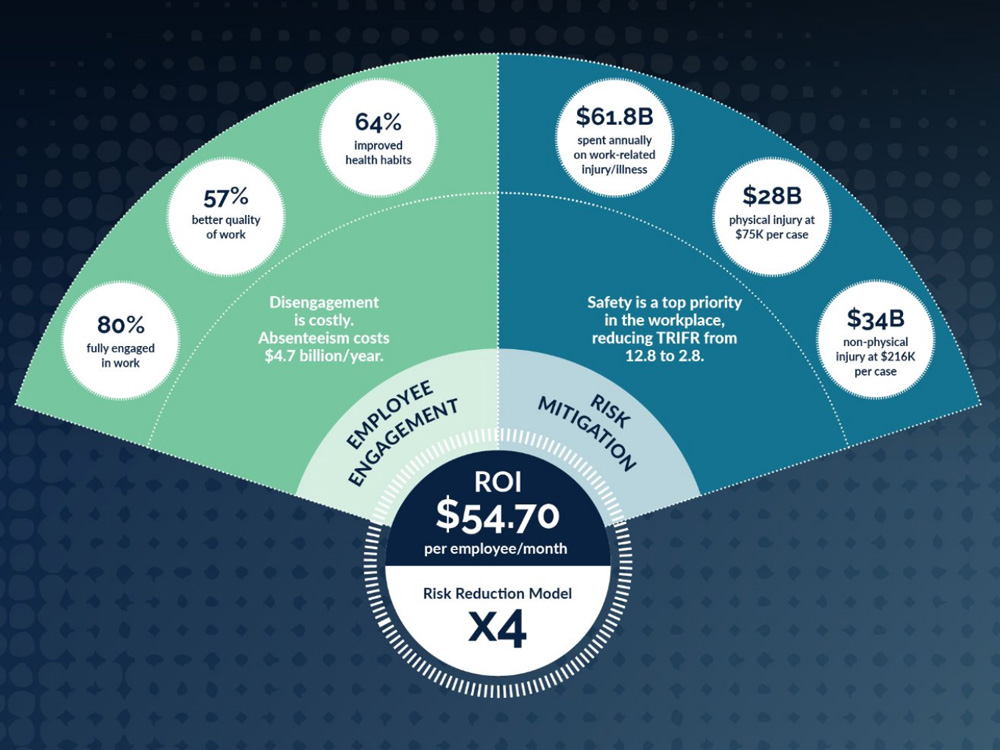
18 Nov Risk factors hunt in packs
There are some hot spots emerging within the risk profiles of individuals, businesses and ultimately the communities of Australia. And these risks are too great (and expensive) to ignore.
With the relatively new legislation around psychosocial risk factors, there has been a natural focus on all things linked to mental or head health, and the impact that workplaces, colleagues and duties have on these risk factors. Whilst managing mental or head health is vital, there are several other risks that need a program on how best to mitigate these risks.
Head Health Risks
Our data on Aussie workers highlights a worrying emerging trend in the workforce with levels of depression, anxiety and stress – particularly among younger employees. While these risks need to be managed, it is comforting that 80-90% of all workers are in the low-risk zones and successfully managing for all three elements of depression, anxiety and stress.
Interestingly, 10-12% of males and 14-19% females are in the moderate and high-risk zones for Head Health. This is across a workforce aged 16-60+ year. On all three risk elements for Head Health, the female is at greater risk – for all ages. The standout high risk is anxiety – peaking at 71% of females, 16-19 years. This compares to 17% of males in this age group being in these high-risk zones. Stress and depression in this vulnerable age group for females is at 43%, males is 7%.
As the workforce ages there is a slow but steady increase in those moving to or staying within the low-risk category for all three elements. This pattern appears more linear with the males as compared to the female population. In general, we appear to get better at managing our Head Health as we age.
These data indicate how different age groups and genders are at managing their mental health. These differences need to be reflected in how your business goes about mitigating these risks for the different cohorts.
Heart Health Risks
Our data on Aussie workers shows, 66% of males and 62% of females are at high or increased risk for Heart Health. About one third of the workforce is in the low-risk zone. The Heart Health data favours females – 22% fewer are at high risk and 12% more are in the green or low risk zone. The females also make better lifestyle choices across 7 out of the 9 factors we measure.
Another risk factor associated with Heart Health is elevated blood pressure (BP). Prolonged, elevated BP is a silent risk factor. Few signs and symptoms are present in elevated BP readings, so it must be measured. Our data is showing between a 2 to 3 times increase in BP readings as the workforces ages. Younger employees have lower BP.
The data shows that 25% of workers have a Systolic Blood Pressure (SBP) reading in the high-risk zone of > 140mmHg. 29% have a SBP reading <120mmHg – they are low risk. The Diastolic Blood Pressure (DBP) presents a different pattern with more individuals in the high and low risk zones – when compared to SBP readings. The average Australian’s DBP is 77mmHg for males and 75mmHg for females. Over 36% of the workforce within our data base are in the high-risk zone with a DBP of > 90 mmHg.
The average Australian’s BP reading is 126/77mmHg for males and 119/76mmHg for females. The desired BP is 120/80mmHg.
This silent risk factor needs to be managed to avoid expensive consequences.
Managing risks of any workforce present challenges. Aiming to manage just one risk at a time, while commendable, ignores the fact that there is a combination of different risks for different genders and age groups.
Let us work together to combat the clusters of risks we know are present in your organisation. Contact us on admin@optimumhms.com.au

